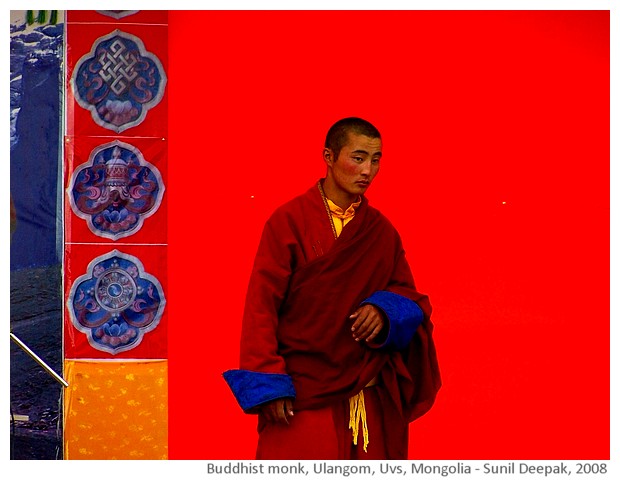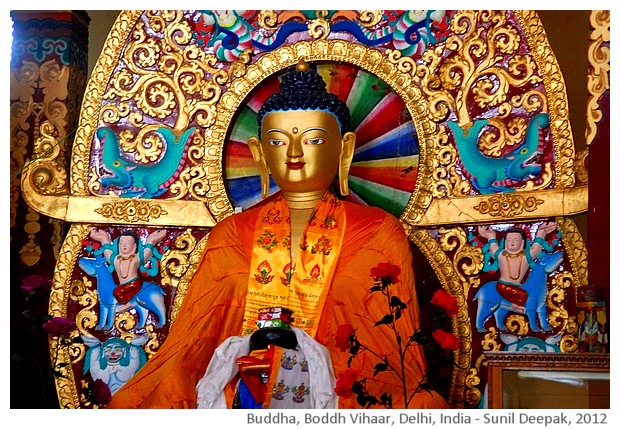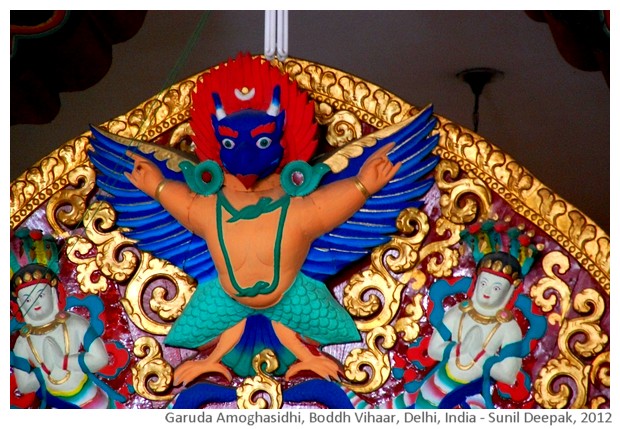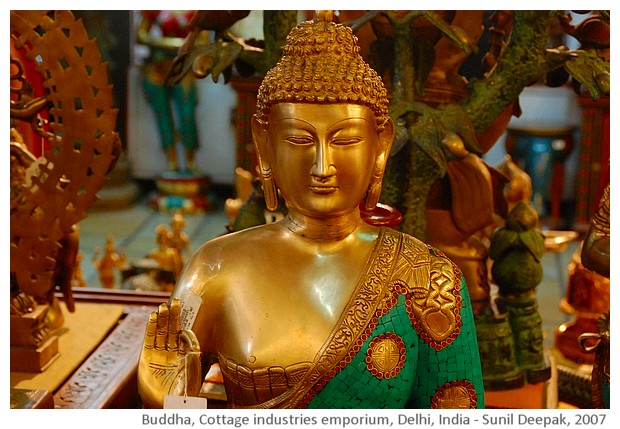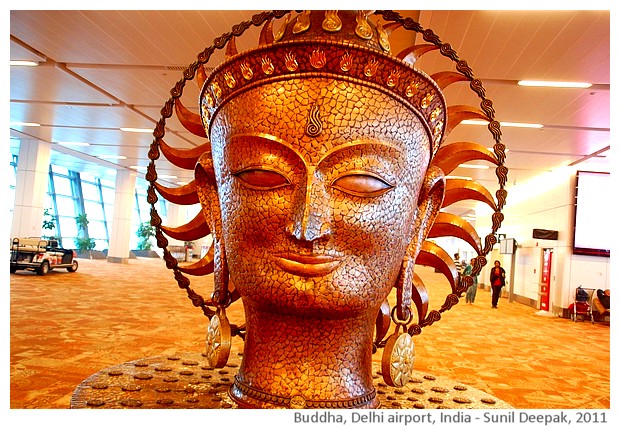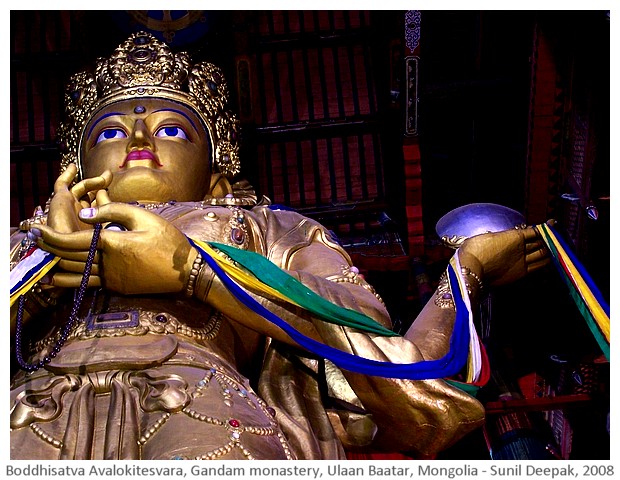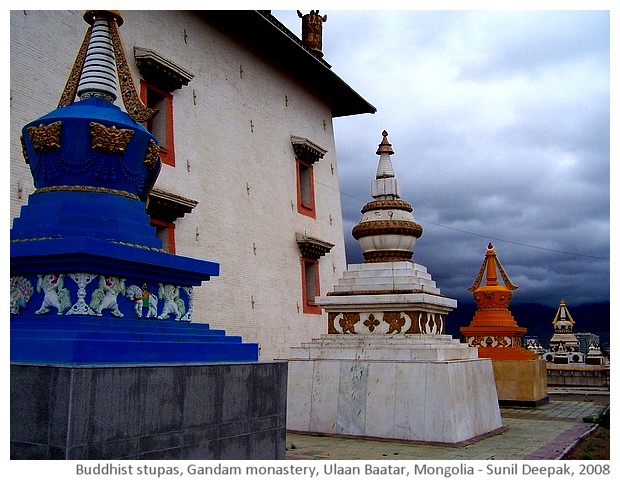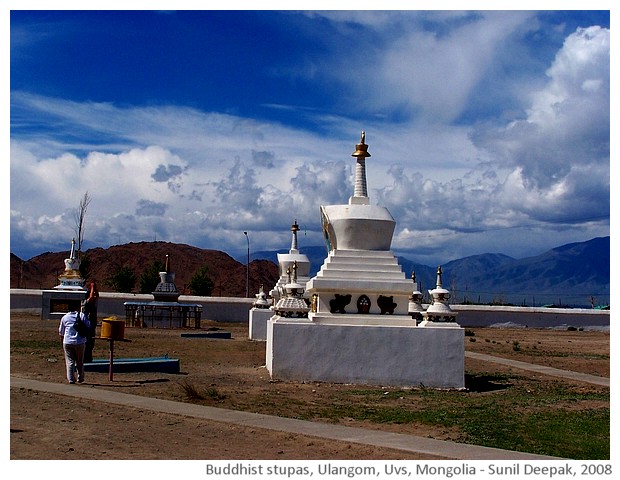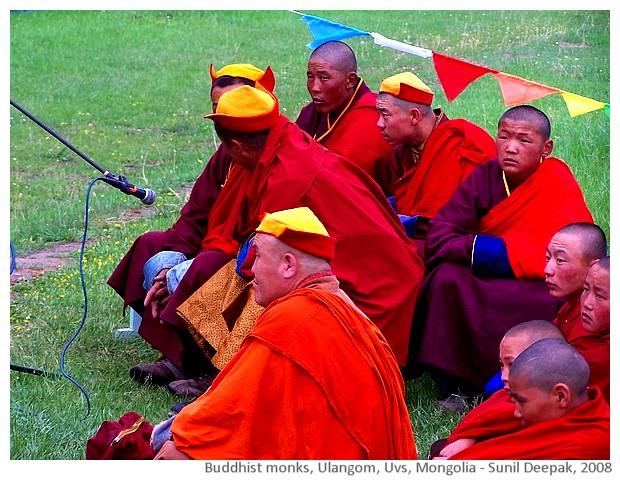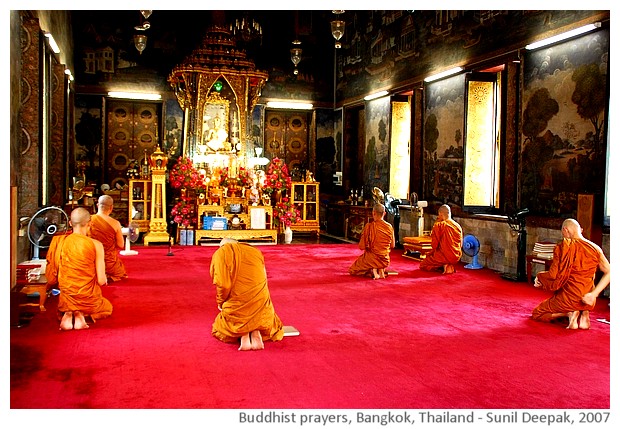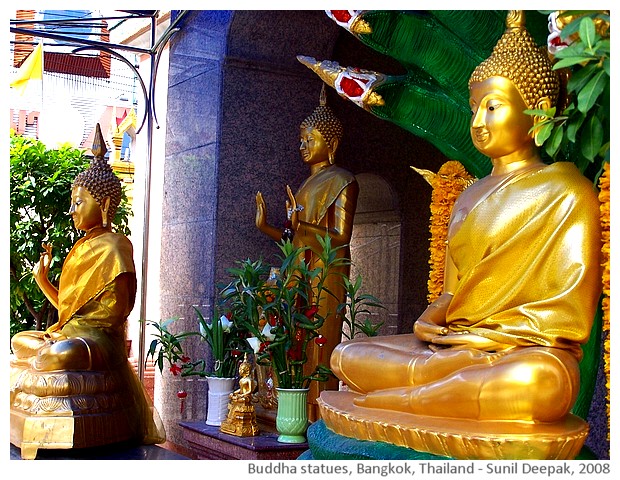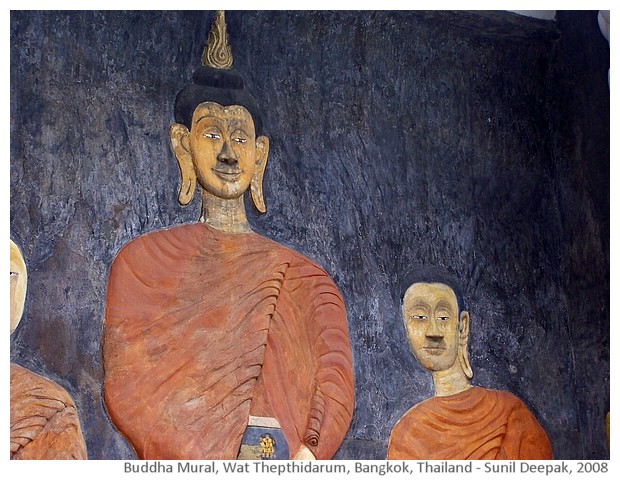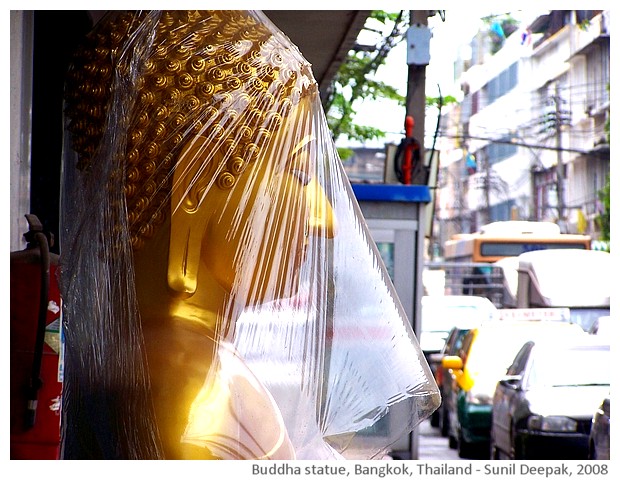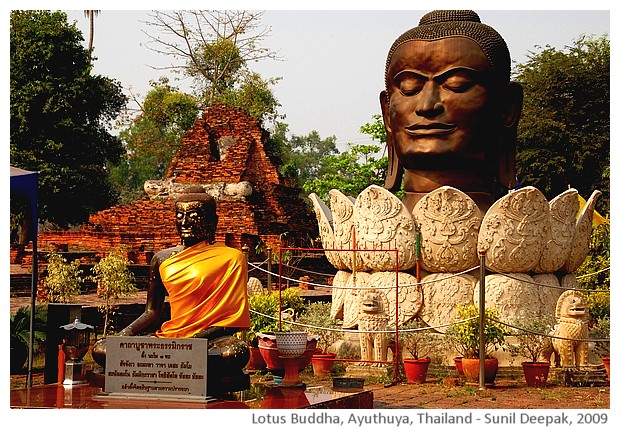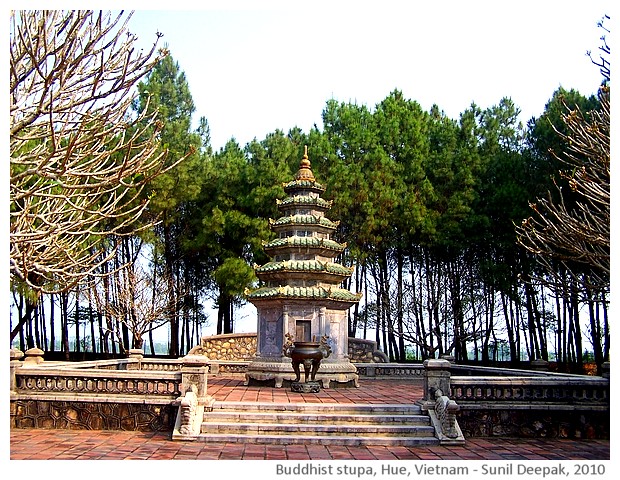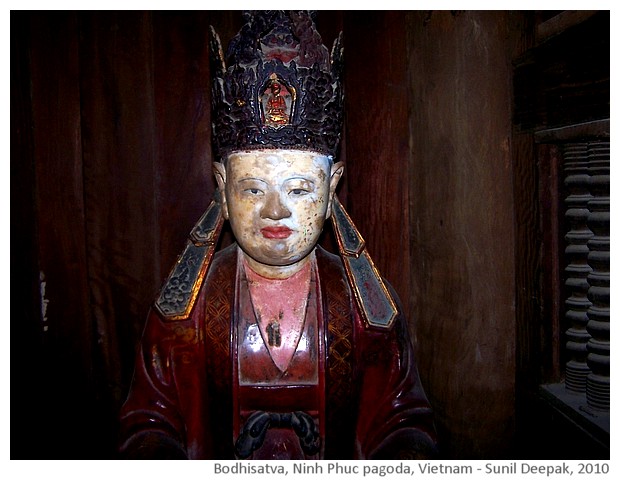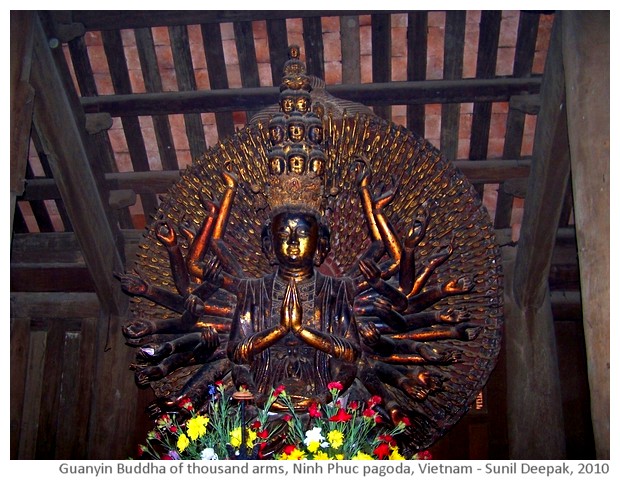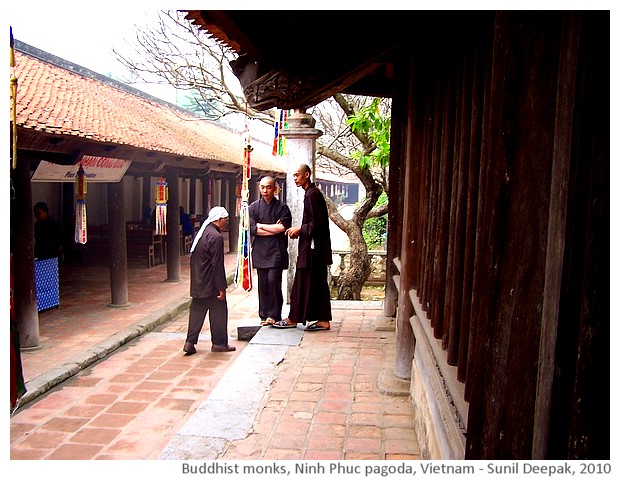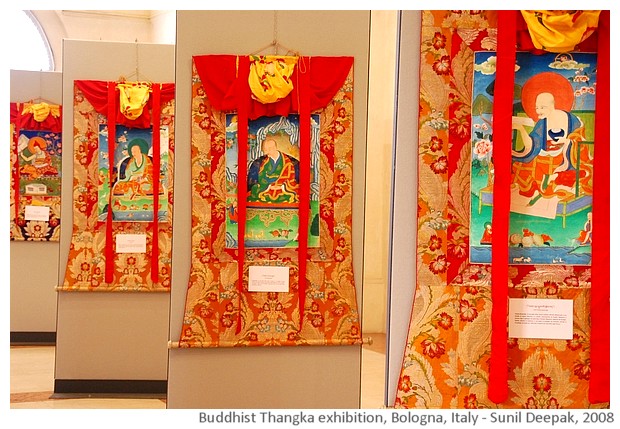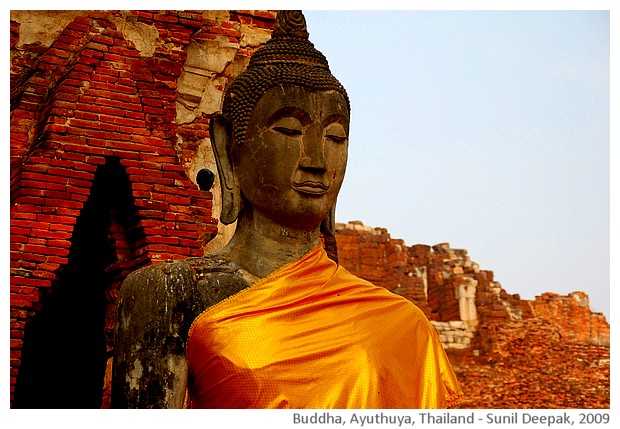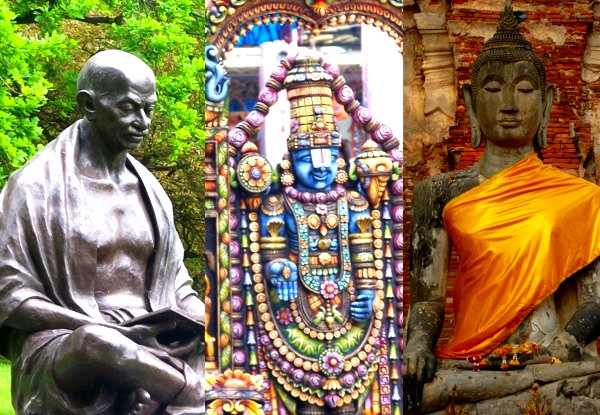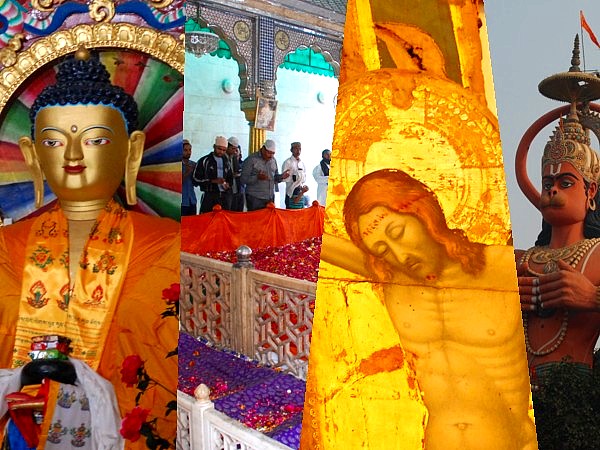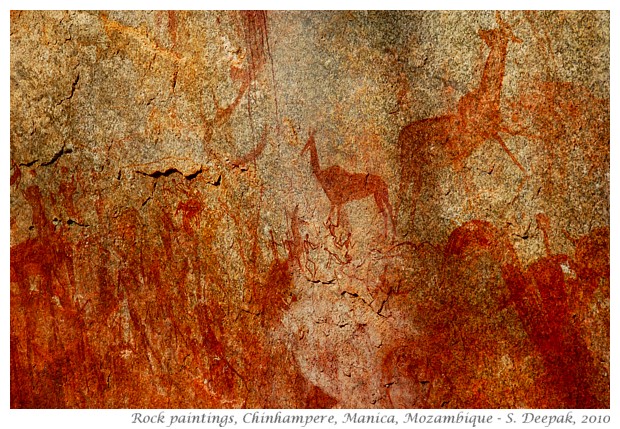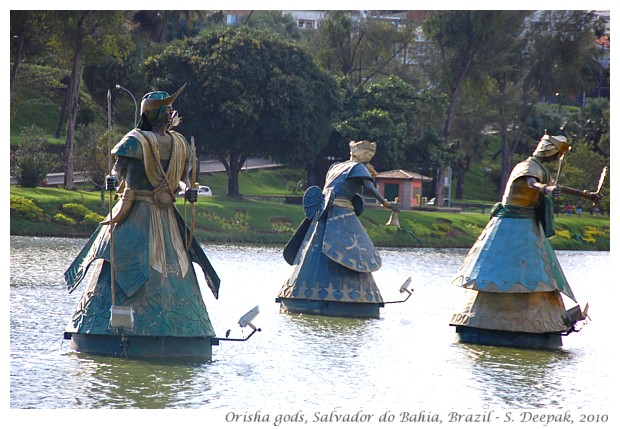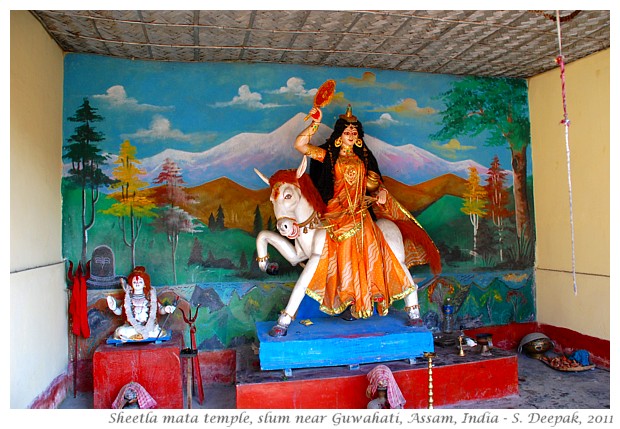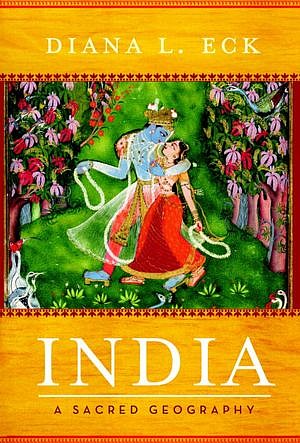Do we really need a religion? If yes, what kind of future religions are being shaped by our societies? If we can study the birth and development of religions in the past, can that help in understanding what kind of religions will come in future?
These are the questions I often ask my self, while thinking of the situation of religions today. On one hand, today we have more inter-religous dialogue and harmony among persons of different religions than ever before in history of mankind, and on the other hand, radicalized and exclusionist religious groups seem to be getting stronger, who insist, often with violence, that their way is the only acceptable way.
Is it feasible to think of possible future developments of religions? Let us start by going back in time to see what do we know about the development of religions in the human history.
Our earliest progenitor, Homo habilis, who used stone tools, came out more than 2 million years ago, but modern humans developed only around 50 thousand years ago. One of the earliest records of those first humans are the rock paintings, like the ones in El Castillo in Spain that are 40 thousand years old.
mainly show animals on the cave walls. This was the Paleolithic (initial stone age) phase of human development. Thus at that time human beings were using simple stone tools, they did not have writing, yet they had good drawing abilities and had some spiritual understanding of their world.
Caves from Lascaux in France and Altamira in Spain are between 15 to 10 thousand years old, from the early bronze period of human development. These also show mainly animal figures and tracings of human hands. Any human figures in these images are mostly schematic, that means stick like figures, different from the more natural looking animal figures.
More recent cave paintings, around 3 to 8 thousand years old, showing animals and hunting scenes are found in many different parts of the world such as the San cave paintings in South Africa.
All these rock paintings point towards the religious or spiritual ideas of humans who lived as hunter-gatherers. They lived in small groups and travelled from one place to another. Usually men were hunters, while women specialized in gathering seeds and plants.
Animal rock paintings have been linked to influencing the spirits of animals, to facilitate their hunting. Thus, early humans thought of spirits in all the living things. It is also thought that lack of proper human figures in rock paintings is linked to taboos around drawing of human spirits.
Earliest evidence of agriculture, that means, domestication of plants and animals, comes from around 10 thousand years ago, from the neolithic period (new stone age), when better stone tools for agricultural and hunting use were made.
showing female bodies. Some of these are more than 35 thousand years old. These statues are thought to be linked to spiritual view of nurturing role of mother nature and fertility rites.
Writing developed only 4 thousand years ago, around the time when the first cities were coming up. The earliest surviving tombs such as stone vaults (Hypogeums) and megalithic tombs are 4-5 thousand years old.
The prehistoric small human groups of hunter-gatherers were in competition with each other for survival. Not till the farming communities came up and then over the next thousands of years, first cities were established, there were incentives for human beings to collaborate and work together with other groups of human beings. Thus the initial 40-45 thousand years of human beings must have been marked by fights and wars between different groups.
Though the hunter-gatherers in different parts of the world had similar religious ideas about spirits of living beings, they probably identified with different animal totems as their protectors or symbols of their groups.
The different social roles of men and women were established during this long dawn of humanity lasting for 40-45 thousand years. Thus women mainly engaged in gathering plants and seeds, household work, and needed protection during pregnancy and growing years of their children. On the other hand, men engaged in hunting and wars. Violence, killing and rape of enemy groups' women as acceptable behaviour of the war, probably shaped the societies in this phase.
I think that though human socities have changed completely in the past few hundreds of years, our male and female social roles are still largely shaped by thousands of years of this early conditioning of human societies.
Religions at the beginning of historical era
The beginning of historical era, started around 4 to 5 thousand b.c. (6 to 7 thousand years ago), as the first cities and civilizations came up in different parts of the world including Egypt, Mesopotamia, China, India and Greece.
At the beginning of historical era, majority of world population was engaged in agriculture and/or animal rearing. Some people continued to be hunter-gatherers but gradually they were becoming the minority. All the different world cultures at that time had started building specific praying places and all of them included a pantheon of gods.
How did the change from animal figures of cave paintings of early humans to the pantheon of gods of early historical period come about?
James A. Michener in his book "The source" (1965) traces the development of different religions in middle east, from the beginning of the historical era till today. In a fictionalized form, he explains the transformation from hunter-gatherer human societies to farming human societies:
.. for the first fifteen years of their married life, Ur's wife went out of the cave in all seasons trying fruitlessly to tame the wild wheat, but each year it was killed either by drought or flood or too much winter or by wild boars rampaging through the field ... Ur's son discovered that the springtime planting of wheat need not be left to the chance scatter of autumn grains. By holding back some of the harvest and keeping it dry in a pouch of deerskin, the grains could be planted purposefully in the spring and the wheat could be made to grow exactly where and when it was needed, and with this discovery the family of Ur moved to a self-sufficient society. They did not know it but if a food supply can be insured, the speed of change would be unbelievable: within a few thousand years cities would be feasible, civilizations too. Men would be able to plan ahead and allocate specialized jobs to each other. They would find it profitable to construct roads to speed the movement of food and to devise a money system for convenient payments.
Thus, farming societies were completely different from the earlier hunter-gatherer societies. Farming communities living in the villages were much more vulnerable to nature's forces such as rains, lightening, thunder storms and fires. These farming humans developed religions with pantheon of gods - a different god for each of the nature's forces that affected their lives. Thus in the pantheon of gods, those who controlled rain, fire and the thunder storms were more important for the farmers.
These gods were seen as temperamental beings who, if happy could give food, prosperity and security, and if angry, they could destroy everything, putting human survival into danger. Therefore, all the different cultures developed systems of prayers and sacrifices for "keeping the gods happy".
For example, India's first sacred book
Rigveda, written around 1500 BC, puts into writing the oral traditions of religious prayers that had developed in this early historical period. The most powerful gods of Rigveda, to whom maximum number of prayer-hymns are devoted, are
Indra, the god of rain, and
Agni, the god of fire.
As human beings developed greater understanding and control of agriculture and they developed new technologies such as boats for sea-travel, new gods became more important and older gods were forgotten.
The mythical Indian story of fight between rain-god Indra and pastor-god Krishna, where Indra brought incessant rains and Krishna protected the pastors by raising up the Govardhan mountain on his hand, is one such example of changing religious ideas as small cities came up and needs of protection from gods changed.
Another Indian example of changes in preferences of gods is about worship of
Sheetla mata, the goddess who is supposed to protect children from diseases like small pox and chicken pox. You can still find temples of
Sheetla mata in poor slum areas where diseases like chicken pox and measles continue to be a life-threatening problem for poor children, but such temples are rare in urban and more developed areas of India.
The rise of monotheistic thought
The ideas of pantheon of gods who controlled different aspects of life on the earth and to whom prayers and sacrifices must be offered were in conflict with earlier ideas of common spirit underlying all the nature. Slow development of technology such as control of fire and shift from caves to man-made dwellings, also conflicted with ideas of powers of individuals gods.
Building of praying places and offering prayers, gifts and sacrifices also gave rise to development of priest classes, with possibilities of conflict between followers of different gods, and between priests and others. For example there is the story of Ikhnaton, the "heretic king" in ancient Egypt, who revolted against the domination of priests of Amon and decided to pray to the Aton (sun god), is one such example of religious conflicts.
In situations of conflict, religious reformers appeared in different parts of the world. Some of them proposed the vision of "one God", a supreme force that controlled life. The period around 500 BC to 500 AD was particularly fertile for these spiritual reformers, especially in two specific geographical areas of the world - the western part of middle-east and northern-part of Indian subcontinent. Those reformers were responsible for most of the religious ideas that dominate the world today.
The middle-east saw figures like Moses, Jesus and Mohammed, who expounded on ideas of the "one God". The stories of Moses are told in the Old Testament, and are linked to Judaism. The stories of Jesus are part of new testament, the sacred book of Christianity. The voice of Mohammed is in Koran, the sacred book of Islam.
In the Indian subcontinent, apart from figures of Mahavira and Buddha, that led to philosophies of Jainism and Buddhism, there were many other philosophers whose ideas formed the Upanishads of Hinduism. These also tend towards ideas of monotheism, though in a different way from the monotheistic ideas that developed in the middle east.
For example, the initial
sholka (prayer) of
Isavasya upanishad is an example of one common unifying cosmic consciousness that moves away from ideas of pantheon of gods:
ॐ पूर्णमदः पूर्णमिदं पूर्णात्पूर्णमुदच्यते!
(Om purnamadah puranamidam purnatpurnamudachyate)
पूर्णस्य पूर्णमादाय पूर्णमेवावशिष्यते॥
(Purnasya purnmaday purnamevavashishyate)
(It means: The whole is all that. The whole is all this. The whole was born of the whole. Taking the whole from the whole, what remains is the whole.)
In each of these religious traditions, a cycle of periodic rise of new religious reformers started that continues till today. Sometimes, the reformers resulted in groups breaking off from the parent religions and becoming separate religions in their own right. Thus all the world religions are actually divided into different sub-groups. Some of the sub-groups, have developed into spearate religions including Baha'i and Sikhs.
At the same time, all over the world there continue to be small or large groups of persons who believe in older religious ideas of early farmers and pastors, such as fire-worshipers (Zoroastrians), nature worshipers, believers of the spirit worlds.
In terms of social roles of men and women, many of these religions have codified recommendations. Most of the time, these recommendations on different social roles of men and women, follow the earlier social roles of human groups from hunter-getherer period of humanity. This means, men are seen as superior, who make decisions and are the owners of the families. On the other hand, women are seen as home-makers and mothers, who need to protected, especially from other men.
The crisis of the religions
Humanity started changing around 4-5 hundred years ago at a greater pace, as cities became bigger and the technological innovations increased. Invention of printing press, colonization, slave trade, large scale immigration towards the "new world", scientific progress and industrial revolution gradually started challenging the existing religious ideas.
For example, in Europe, different developments such as discovery of fossils, Darwin's theory of evolution, Galileo's ideas of earth and planets circling the Sun, challenged some of the beliefs proposed by Christian theologians. These challenges resulted in ferocious religious backlash by Christian conservatives in Europe including centuries of brutal inquisition and religious crusades.
One of the most important change that is challenging traditional ideas of religions is the shift from rural to urban communities. This shift challenges the hold of religious, community and family leaders on individuals. Thus, in urbanized countries, earlier religious ideas and socially acceptable behaviours about everything including marriage, having children, sex (including same sex relationships), dresses and worship, have been overturned. The recommendations of the religious leaders are mostly ignored by large number of faithfuls, especially by younger generations.
Though this transition of old into new communities started in Europe more than 5 hundred years ago, it is still far from over. For example,
Michael S. Kimmel discusses the challenges for men to understand the
new roles of gender equity in his paper:
Indeed, the women’s movement is one of the great success stories of the twentieth century, perhaps of any century. It is the story of a monumental, revolutionary transformation of the lives of more than half the population. But what about the other half? Today, this movement for women’s equality remains stymied, stalled. Women continue to experience discrimination in the public sphere. They bump their heads on glass ceilings in the workplace, experience harassment and less-than fully welcoming environments in every institution in the public sphere, still must fight to control their own bodies, and to end their victimization through rape, domestic violence, and trafficking in women.
I believe the reason the movement for women’s equality remains only a partial victory has to do with men. In every arena—in politics, the military, the workplace, professions and education—the single greatest obstacle to women’s equality is the behaviors and attitudes of men. I believe that changes among men represent the next phase of the movement for women’s equality—that changes among men are vital if women are to achieve full equality. Men must come to see that gender equality is in their interest—as men.
If that is the situation in the developed world in Europe and America, what is happening in the rest of the world? The changes have become faster and even more radical over the past century, spreading over to all the different parts of the world. Improvements in health care and birth control, women going out of homes to work, access to education, international travel, globalization, information technology are some of these changes that lead to mixing of populations and ideas. These changes are challenging traditional ideas of different religions and the social roles of men and women.
Like the backlash of conservative christianity in Europe some centuries ago, these challenges to traditional ideas of other religions in different parts of the world have led to backlash of other conservative groups, sometimes equally ferocious and brutal in trying to repress these challenges. The rise of Wahabi Islam is one such example of religious backlash, but Islam is not alone in this - all religions are facing similar crisis.
In the remaining parts of the world, the transformation from rural to urban communities has started but would continue for the next fifty-hundred years. As the example of Europe shows, the change in mentalities may take centuries, and we can expect many more ferocious battles and backlashes from traditional religious and social leaders, who will fight to safeguard their powers and interests.
At the same time, there are already large groups of thinkers and activists in different parts of the world who agree with the need to challenge the status quo about the domination of socio-religious ideas and understand the need to define new rules to govern our social and public lives. Can we create national and trans-national communities that can make this trasition smoother and less conflictual? This is an issue that we need to address.
Religions for the future
Shall we really need religions in the future? I personally feel that as long as people will go through cycles of life and death, the questions such as what is life, what is death, is there an afterlife, are going to accompany us, and this will continue to create the space for religions.
There are many persons who do not believe in a spirit or a cosmic consciousness, who define themselves as atheists, but often even they have some doubts in explaining the godless accidental origin of life from a biochemical primordial soup.
Those of us who live in societies where technical progress safeguards us from the worst of nature's forces, people do not need to seek the protection of gods for their survival. Still illness, accidents, stresses of modern life, and relative poverty create fertile grous for prayers and religions.
Unless technological progress will lead to some kind of environmental disaster that may turn back the clock of human development, the change from rural farming and nomadic pastor communities to urban technological communities can not be reversed. This, in the medium and long term, will lead to new and different religious ideas.
Individuals living in resource and technology rich environments already often have religious ideas that have been called "New Age". An
explanation of the "new age" philosophy is as follows:
To understand New Age philosophy it’s important to understand that the contemporary Cosmic Humanist movement has its roots in the Romantic poets of the 1800s, such as Ralph Waldo Emerson, Walt Whitman, and Henry David Thoreau. These men rejected the God of the Bible, instead writing at length about a transcendent quality of spirituality experienced purely through personal introspection. These ideas did not attract a broad audience until the 1960s, when popular recording artists, movie stars, and Eastern gurus began trumpeting their New Age views across the nation. More recently, well-known recording artists such as Madonna and Alanis Morissette have identified themselves with Hinduism, while popular personalities such as Tiger Woods, Phil Jackson, and Richard Gere openly embrace Zen Buddhism. Other luminaries, such as Tom Cruise and John Travolta, express a belief in scientology.
We don't know if future religions will be shaped by these "New Age" ideas or other different ideas. However, to be acceptable to majority of people, religions will have to take into account the needs of persons living in urban spaces as singles or as nuclear families. Thus the ancient ideas of women's and men's roles will have to change.
For example, in my opinion, religions asking for covering of women's bodies or not letting them go out to work or with rigid ideas about what kind of sexual lives people should lead, will not be accepted in future as socities will change and get used to living in urban spaces.
Personally, I also believe that future religions that do not take into account the principles of universal declaration of human rights, will be refused by majority of world population. Such conservative religious groups and sects may continue to flourish in small minority communities, but they will not become mainstream.
